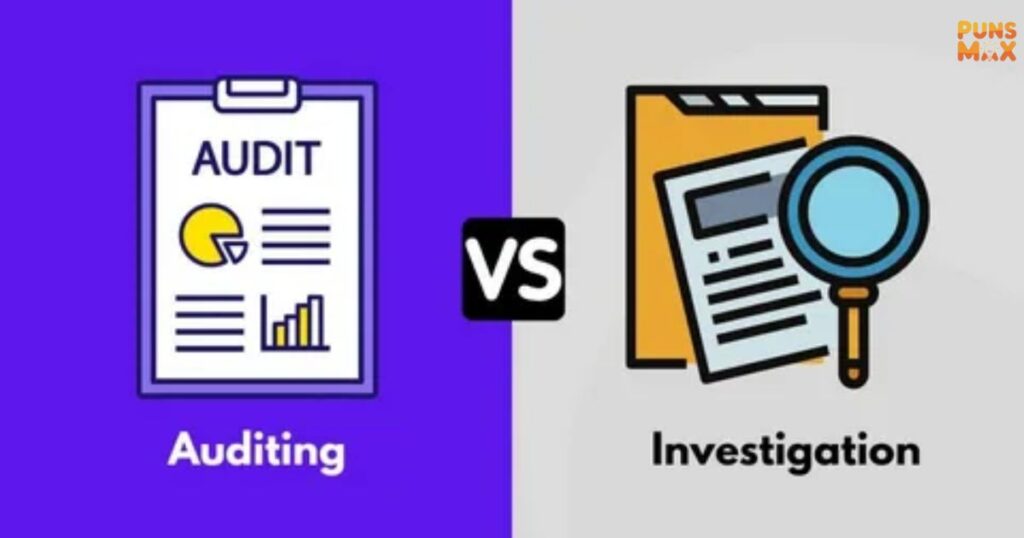Are your bills silently eating into your company’s budget? Many businesses unknowingly pay extra due to billing errors, unnecessary services, or overlooked subscriptions. That’s where a telecom expense audit comes in – a simple yet powerful way to uncover hidden costs and optimize your telecom spending. Think of it as giving your bills a magnifying glass and discovering savings you never knew existed.
In this article, we’ll guide you through step-by-step strategies, expert tips and proven tools for telecom expense management audit, telecommunication cost management, and overall telecom cost management. Whether you’re a small business owner or managing a large enterprise, learning how to track, verify, and reduce telecom expenses can save thousands of dollars annually. Stick with us, and by the end, you’ll see exactly how a telecom audit can turn your bills from a cost headache into a savings opportunity.
Decoding Telecom Audits

- Audits clarify the maze of bills, preventing budget headaches every month.
- Reviewing invoices carefully turns confusing codes into easy-to-understand insights.
- A missing line on your bill could hide a sneaky cost.
- Detecting duplicate charges early keeps your company’s wallet much happier.
- Each telecom plan reviewed uncovers hidden savings waiting patiently to bloom.
- Detailed audits reveal overlooked subscriptions draining money silently each month.
- Understanding usage patterns is key to cutting unnecessary telecom fees efficiently.
- Billing errors are sneaky, but audits catch them with precision magic.
- Telecom codes may look cryptic, but audits translate them effortlessly.
- Scrutinizing contracts uncovers clauses costing more than their perceived value.
- Regular audits ensure you never pay for disconnected or inactive lines.
- A small audit today prevents giant telecom regrets tomorrow.
- Unraveling billing mysteries is like solving a puzzle with financial rewards.
- Audits turn messy invoices into clear pathways for smarter spending.
- Telecom audits help leaders make informed, strategic budgetary decisions confidently.
- Reviewing past usage identifies patterns to optimize future telecom expenditures.
- Detailed audits highlight unused services, helping companies trim unnecessary costs.
- Every hidden fee revealed strengthens your negotiation leverage with providers.
- Auditing telecom expenses ensures companies avoid overpayment for underused services.
- Audit insights empower teams to forecast and control telecom budgets wisely.
- Identifying billing inconsistencies keeps telecom accounts accurate and fully compliant.
- Telecom audits translate complicated invoices into actionable cost-saving strategies.
- A thorough audit transforms confusion into clarity, saving money effortlessly.
Read More: 240+Neo Metal Sonic – Origin, Battles, and Why Fans Call Him the True Sonic Rival
Hidden Telecom Savings
- Forgotten lines cost silently, audits uncover them like hidden treasure chests.
- Small subscription errors may hide huge savings if only noticed.
- Switching providers after analysis can unlock significant hidden financial benefits.
- Unused data packages are quietly bleeding your company’s telecom budget.
- Redundant services can be eliminated, freeing up capital for growth.
- Hidden discounts often lurk in contract renewals unnoticed by many.
- Analyzing call patterns reveals plans better suited for your team.
- Optimized plans eliminate overcharges while improving service efficiency effortlessly.
- Detecting rarely used features prevents paying for what’s never utilized.
- Telecom audits spotlight cost-saving opportunities even your team overlooked.
- Providers may offer loyalty incentives if you show auditing diligence.
- Audits uncover hidden savings lying beneath complex billing jargon cleverly.
- Every unnecessary line removed adds measurable value to the budget.
- Consolidating plans can reduce expenses while improving service quality immediately.
- Hidden fees often appear trivial, but audits make savings tangible.
- Small billing corrections accumulate into large cost reductions over time.
- Audits identify features that are rarely used yet highly expensive.
- Reviewing past usage data often uncovers overlooked negotiation advantages.
- Detecting duplicate charges quickly ensures no money goes unaccounted.
- Hidden savings often hide behind complex international or roaming charges.
- Identifying unused numbers converts wasted costs into meaningful revenue potential.
- Smart auditing turns unnoticed line errors into unexpected budget wins.
- Each hidden fee found is like a small financial victory unlocked.
Audit Step-by-Step

- Gather invoices and contracts to understand all telecom service commitments clearly.
- Review each line item carefully, checking for discrepancies or hidden charges.
- Compare current usage with past patterns to detect anomalies accurately.
- Verify billing rates against contract terms to ensure compliance.
- Identify inactive or redundant lines for removal or optimization promptly.
- Audit recurring charges to confirm only authorized services are billed.
- Create a checklist for consistent and thorough audit procedures.
- Flag unusual usage spikes that may indicate billing errors.
- Verify international or roaming charges for potential overbilling surprises.
- Cross-check services with actual employee usage to prevent waste.
- Document audit findings clearly to support future cost negotiations.
- Calculate potential savings by identifying overcharges or misapplied rates.
- Compare provider plans for better alignment with company needs efficiently.
- Conduct periodic audits to prevent long-term billing discrepancies from growing.
- Validate taxes and surcharges to ensure accurate billing amounts.
- Ensure all contract renewals consider audit findings for maximum savings.
- Track changes over time to measure the effectiveness of audits.
- Involve multiple stakeholders for comprehensive review and error detection.
- Prioritize high-cost areas to maximize audit impact on budget.
- Audit mobile, internet, and fixed-line services individually for clarity.
- Maintain a centralized database of billing history for reference accuracy.
- Use audit findings to negotiate better contract terms proactively.
- A step-by-step audit ensures predictable, measurable telecom cost reductions.
Audit Pitfalls
- Ignoring small line items can lead to surprisingly large budget losses.
- Failing to track usage often hides errors that grow unnoticed.
- Relying solely on provider statements risks paying inflated bills blindly.
- Auditing without historical data misses patterns critical for accurate savings.
- Overlooking contract terms may result in unnecessary charges or penalties.
- Skipping verification of roaming fees can inflate costs significantly.
- Missing duplicate charges leads to avoidable telecom expense overruns.
- Ignoring unused services prevents identifying valuable cost-saving opportunities.
- Rushing audits reduces accuracy and undermines potential financial benefits.
- Failing to involve key stakeholders risks incomplete or incorrect findings.
- Forgetting to check taxes and surcharges can create hidden financial leaks.
- Neglecting audit documentation complicates future reviews and accountability efforts.
- Not reconciling multiple invoices may hide billing inconsistencies unnoticed.
- Overcomplicating the audit process wastes time without improving savings.
- Blindly trusting automated reports may miss nuanced, provider-specific errors.
- Ignoring usage spikes can allow undetected fraudulent charges to persist.
- Skipping mobile device audits often results in overlooked overcharges.
- Neglecting data usage comparison risks selecting inefficient telecom plans.
- Failing to schedule audits regularly lets small errors accumulate.
- Overlooking international charges can unexpectedly increase overall expenses dramatically.
- Misinterpreting contract clauses can lead to unnecessary cost escalations.
- Ignoring audit recommendations renders the entire process ineffective financially.
- Auditing in isolation without collaboration risks incomplete financial visibility.
Cut Telecom Costs

- Consolidate plans to remove redundancy, saving money while boosting efficiency.
- Negotiate contracts using audit insights for better provider terms confidently.
- Eliminate unused lines to reduce unnecessary monthly telecom expenses permanently.
- Switch to optimized plans matching actual usage patterns accurately.
- Implement usage caps to control overage charges before they occur.
- Use data analytics to pinpoint cost-saving opportunities smartly.
- Review international usage to prevent unexpected high roaming fees regularly.
- Audit device plans to eliminate excessive or overlapping subscriptions quickly.
- Reduce unnecessary features while maintaining essential telecom functionality effectively.
- Centralize billing for better visibility and expense management efficiency.
- Automate recurring audits to catch errors consistently without manual effort.
- Remove dormant accounts to free up budget for active lines.
- Optimize cloud and collaboration tools to reduce telecom-related service costs.
- Limit costly premium services unless truly necessary for operations.
- Encourage employee awareness to minimize wasteful mobile or data usage.
- Audit call routing to prevent expensive misdirected or long-distance charges.
- Implement approval processes for new services to prevent overspending immediately.
- Consolidate vendors where possible to leverage better pricing deals consistently.
- Regularly renegotiate contracts to reflect current usage and market rates.
- Track service utilization to optimize plan allocation across departments efficiently.
- Leverage analytics tools for proactive cost reduction and trend detection.
- Audit wireless and landline services separately to uncover hidden cost differences.
- Each cost-saving action builds a stronger, more efficient telecom strategy.
Read More: 160+Helio Air Broom – The Smart Way to Clean Faster & Easier Than Ever
Tech Tools for Audits
- Automated billing software detects discrepancies faster than manual review ever could.
- Cloud-based audit tools centralize invoice data for instant visibility across teams.
- AI-driven analytics identify unusual patterns in telecom usage automatically.
- Data visualization tools highlight areas of overspending clearly and immediately.
- Contract management systems track key dates to prevent renewal overcharges.
- Expense tracking apps categorize charges to pinpoint specific cost areas.
- Reporting dashboards consolidate multiple invoices for easy comparison and audit.
- Mobile management platforms track device usage to control monthly expenses efficiently.
- Automated alerts flag unusual activity, avoiding billing surprises before they grow.
- Integration tools sync telecom and accounting data for seamless reconciliation.
- Workflow automation simplifies approval processes for new services effectively.
- AI chatbots assist in interpreting complex billing codes instantly.
- Predictive analytics forecast future telecom costs based on usage trends accurately.
- SaaS monitoring tools highlight underused services for potential elimination quickly.
- Cloud expense platforms enable collaboration between finance and operations teams.
- Audit templates standardize review processes to ensure consistency across periods.
- Mobile apps allow remote verification of invoices and usage data conveniently.
- Machine learning models detect errors invisible to traditional audits efficiently.
- Data aggregation tools reduce manual effort, increasing audit accuracy significantly.
- Digital contract repositories store key terms for easy reference anytime.
- Reporting automation transforms raw data into actionable audit insights immediately.
- Cost allocation tools ensure charges match actual departmental usage accurately.
- Tech tools turn tedious auditing into a fast, precise, and insightful process.
Expense Management Hacks

- Track every service to avoid paying for inactive or duplicated lines.
- Use alerts for high usage to prevent surprise overage fees quickly.
- Audit monthly to catch errors before they compound into larger losses.
- Compare provider invoices regularly to leverage competitive negotiation power strategically.
- Implement usage caps to control excessive calls or data charges efficiently.
- Schedule routine plan reviews to match evolving employee and business needs.
- Encourage employees to report unusual charges promptly to save money.
- Consolidate billing into single invoices for streamlined expense management control.
- Remove unnecessary features to optimize every dollar spent on telecom services.
- Use historical usage data to forecast future telecom budgets accurately.
- Negotiate contracts leveraging audit findings for better terms and discounts.
- Automate recurring audits to maintain continuous oversight effortlessly and effectively.
- Standardize approval processes to prevent unauthorized service subscriptions immediately.
- Track device allocation to prevent overprovisioning and redundant costs consistently.
- Review international usage regularly to avoid hidden charges and surges.
- Monitor cloud service consumption to prevent telecom-related overbilling efficiently.
- Use dashboards for real-time insights into telecom expenses across departments.
- Leverage predictive models to detect future cost spikes proactively.
- Ensure tax and surcharge compliance to avoid unexpected regulatory fees.
- Educate staff on cost-conscious practices to reduce waste collectively.
- Implement central oversight to prevent fragmented spending across multiple providers.
- Benchmark usage patterns against industry standards for optimized cost management.
- Expense hacks transform audits into long-term savings opportunities effortlessly.
Data Accuracy Matters
- Correct data ensures telecom bills reflect actual usage without unnecessary charges.
- Inaccurate entries create confusion and increase audit time significantly.
- Regular reconciliation prevents errors from snowballing into larger financial losses.
- Accurate device tracking avoids paying for lost or inactive lines.
- Proper categorization of services ensures precise cost allocation per department.
- Cross-checking invoices against contracts validates charges for transparency and trust.
- Accurate reporting provides actionable insights to optimize telecom expenditures effectively.
- Mistyped account numbers may create billing duplications or overlooked fees.
- Clean data simplifies negotiations and strengthens auditing credibility significantly.
- Verifying usage metrics prevents paying for features that go unused consistently.
- Accurate historical data allows better forecasting for upcoming budgets.
- Data errors obscure hidden savings and prolong audit processes unnecessarily.
- Precise records simplify identifying duplicate charges or unauthorized service subscriptions.
- Clean data streamlines automated auditing tools for efficiency and reliability.
- Accurate cost tracking helps pinpoint department-specific telecom savings opportunities.
- Maintaining data integrity prevents conflicts with providers over disputed invoices.
- Correct reporting supports compliance with internal and regulatory auditing standards.
- Data accuracy transforms messy invoices into clear, actionable financial insights.
- Misreporting taxes or surcharges can lead to avoidable fines or overcharges.
- Precise data ensures billing transparency and strengthens provider relationship trust.
- Accuracy in usage logs highlights services worth retaining or eliminating.
- Regular data validation prevents small errors from escalating into large costs.
- Data integrity is the backbone of effective telecom expense management success.
Audit vs. Tracking

- Audits reveal errors while tracking monitored usage trends for informed decisions.
- Tracking shows patterns; audits correct them to maximize financial efficiency.
- Without audits, tracking only records errors without providing cost solutions.
- Audit addresses discrepancies; tracking anticipates future usage for proactive planning.
- Tracking is passive observation, while audits actively reduce expenses and mistakes.
- Regular tracking simplifies audits by providing accurate usage and billing history.
- Audits validate tracking data to ensure full accuracy and accountability.
- Tracking helps identify anomalies that audits then investigate and correct efficiently.
- Without proper tracking, audits may miss recurring or subtle billing errors.
- Audit solves past mistakes; tracking prevents them from happening repeatedly.
- Combining tracking and auditing ensures comprehensive telecom expense management success.
- Tracking highlights opportunities; audits capitalize on them to save costs effectively.
- Audits provide corrective action; tracking offers ongoing monitoring for sustainability.
- Proper balance between tracking and auditing keeps telecom expenses under control.
- Tracking visualizes usage; audits quantify financial impact of inefficiencies precisely.
- Audits depend on tracking accuracy to detect hidden overcharges reliably.
- Tracking alone cannot guarantee savings without periodic, in-depth audits applied.
- Auditing transforms data into actionable cost-saving insights beyond raw tracking.
- Continuous tracking supports timely audits by supplying real-time usage data.
- Audits and tracking together prevent waste and improve budget forecasting effectively.
- Tracking identifies trends; audits resolve irregularities to maintain financial health.
- Without audits, tracking may overlook critical billing inconsistencies silently.
- The synergy between audits and tracking ensures telecom costs remain optimized.
Read More: 185+How to Remove Gel Nail Polish Like a Pro – Simple DIY Method That Works
Top Audit Wins
- Discovering duplicate charges often yields immediate, tangible savings for any company.
- Eliminating inactive lines reduces monthly bills while freeing up budget quickly.
- Correcting overbilling ensures money is returned and future charges remain accurate.
- Negotiating contracts using audit insights secures better pricing and terms efficiently.
- Identifying underutilized plans leads to reallocation or removal, saving costs consistently.
- Catching incorrect taxes and surcharges prevents avoidable financial leaks immediately.
- Streamlining device allocations eliminates redundant subscriptions without disrupting operations.
- Consolidating vendors reduces complexity and enhances bargaining power for discounts.
- Adjusting international and roaming charges prevents unnecessary overpayment instantly.
- Detecting billing errors early ensures long-term budget integrity and savings.
- Optimizing plans based on usage improves efficiency and reduces recurring costs.
- Removing redundant features prevents waste while maintaining necessary services efficiently.
- Applying audit findings in renewals locks in cost-saving opportunities proactively.
- Identifying fraudulent or unauthorized usage protects against unexpected financial losses.
- Improving expense transparency strengthens internal control and accountability measures effectively.
- Automated auditing tools increase accuracy while reducing manual effort significantly.
- Regular review cycles catch hidden errors before they escalate financially.
- Analyzing historical data uncovers savings opportunities previously unnoticed by teams.
- Department-level auditing ensures targeted cost reductions aligned with usage patterns.
- Standardizing audit processes creates consistency and predictable financial outcomes reliably.
- Negotiation leverage improves when audits reveal actual usage and billing discrepancies.
- Tracking cumulative savings builds momentum and validates the audit investment wisely.
- Each audit victory compounds into long-term telecom expense optimization success effortlessly.
Conclusion
A telecom expense audit isn’t just a routine check – it’s a smart way to uncover hidden costs, eliminate errors, and make your business telecom cost management more efficient. By carefully reviewing bills, tracking subscriptions, and using the right tools for telecom expense management audit, you can save significant money while ensuring every service you pay for is truly needed. Even small savings add up over time, making a big difference to your bottom line.
Remember, the key to a successful telecom audit is consistency and attention to detail. Whether you’re managing telecommunication cost management for a small business or a large enterprise, implementing these audit strategies can turn telecom management from a frustrating task into a powerful cost-saving opportunity. Start today, and watch your telecom expenses become an area of control instead of concern.

